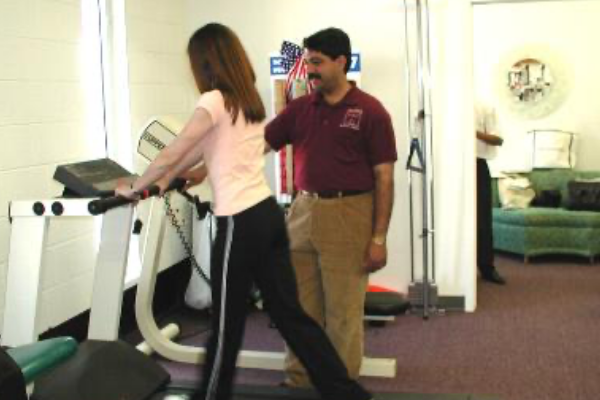What is Myofascial Release?
Myofascial Release is a gentle and safe hands-on method of soft tissue mobilization, developed by John Barnes, that involves applying gentle sustained pressure to the subcutaneous and myofascial connective tissue. This low load sustained stretch gradually, over time, allows the myofascial tissue to elongate and relax, thus allowing increased range of motion, flexibility and decreased pain.
Trauma, inflammatory responses, and/or surgical procedures create Myofascial restrictions that can produce tension on the tissues of pressures approximately 2,000 pounds per square inch on pain sensitive structures that do not show up in many of the standard tests (x-rays, myelograms, CAT scans, electromyography, etc.).
Myofascial Release allows us to reduce tightness and pain, and improve flexibility in a unique one-on-one therapy session that is totally hands on. Our therapists use a multitude of Myofascial Release techniques and movement therapy. We encourage independence through education in proper body mechanics and movement, enhancement of strength, improved flexibility, and postural and movement awareness.
Hands-On Treatment
Each Myofascial Release Treatment session is performed directly on skin without oils, creams or machinery, allowing the therapist to accurately detect fascial restrictions and apply the appropriate amount of sustained pressure to facilitate release of the fascia.
Fascia
Fascia connects muscle to muscle, and muscle to bone. This specialized system of the body has an appearance similar to a spider web or a sweater. Fascia is very densely woven, covering and interpenetrating every muscle, bone, nerve, artery and vein, as well as, all of our internal organs including the heart, lungs, brain and spinal cord. The most interesting aspect of the fascial system is that it is not just a system of separate coverings, but one continuous structure that exists from head to toe without interruption. Each part of the entire body is connected to every other part by the fascia, like the yarn in a sweater. For example, if you start pulling out a thread on the side of the sweater, eventually that whole side will tighten up like a straitjacket.
Trauma, inflammatory responses, and/or surgical procedures create Myofascial restrictions that can produce intense tensile pressures of approximately 2,000 pounds per square inch on pain sensitive tissues like nerves. It is thought that an extremely high percentage of people suffering with pain and/or lack of motion may be having fascial problems, but most go undiagnosed.
Fascia plays an important role in the support and function of our bodies, since it surrounds and attaches to all structures. In the normal healthy state, the fascia is relaxed and wavy in configuration. It has the ability to stretch and move without restriction. When one experiences physical or emotional trauma, scarring, or inflammation, the fascia loses its pliability and becomes tight, restricted, and a source of tension to the rest of the body. Trauma, such as a fall, car accident, whiplash, surgery or habitual poor posture and repetitive stress injuries have cumulative effects on the body. Trauma causes changes in the fascial system which influence comfort and function of our body. Fascial restrictions can exert excessive pressure causing all kinds of symptoms producing pain, headaches or restriction of motion. Fascial restrictions affect our flexibility and stability, and are a determining factor in our ability to withstand stress and perform daily activities.
Problem Areas:
• Back Pain
• Headaches
• Whiplash
• Pelvic Pain
• Neck Pain
• Sports Injuries
• Chronic Pain
• Disc Problems
• Migraines
• Pelvic Floor Dysfunction
• Neurological Dysfunction
• Fibromyalgia
• Chronic Fatigue Syndrome
• Adhesions
• Carpal Tunnel
• Jaw Pain (TMJ)
• Painful Scars
• Scoliosis
• Infants/Children
• Sciatica
• Myofascial Pain Syndrome
• Women’s Health Issues
Women’s Health Problems:
• Vulvodynia
• Interstitial Cystitis
• Mastectomy Pain
• Menstrual Problems
• Painful Intercourse
• Urinary Frequency
• Problematic breast implant/reduction scars
• Coccydynia
• Endometriosis
• Infertility problems
• Urinary Incontinence
• Lymphedema
• Urinary Urgency
• Episiotomy Scars
• Pelvic Floor Pain
• Pudendal Nerve Entrapment



